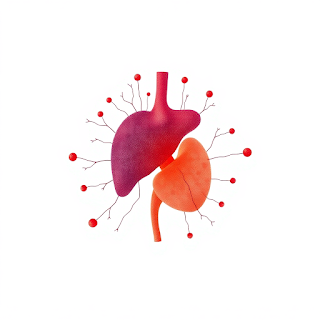Income dramatically affects liver cancer survival rates. New research reveals how lower-income patients face delayed diagnoses and limited treatment options.
💔 Liver Cancer Survival Rates Reflect Income Disparities: A Global Health Crisis
🩺 Introduction: The Unequal Fight Against Liver Cancer
Liver cancer, particularly hepatocellular carcinoma (HCC), is a formidable health challenge worldwide. While medical advancements have improved outcomes for many, a growing body of research reveals a stark reality: survival rates for liver cancer are significantly influenced by socioeconomic status. Recent studies highlight that patients with lower incomes face higher mortality rates, often due to delayed diagnoses and limited access to curative treatments.
📊 The Data: Income Disparities in Survival Rates
A 2025 study from the University of Gothenburg found that patients with low household incomes had a 30% higher risk of dying from HCC compared to those with middle or high incomes. These patients were less likely to receive early diagnoses and curative treatments, underscoring the impact of income on healthcare access .ScienceDaily
Similarly, a South Korean study analyzing data from 2002 to 2018 revealed persistent income-related disparities in 5-year survival rates for liver cancer. Higher-income groups consistently showed better survival outcomes, highlighting the global nature of this issue .MDPI+1JKMS Journal of Korean Medical Science+1
🧬 Factors Contributing to Disparities
Several factors contribute to the income-related disparities in liver cancer survival:
-
Delayed Diagnosis: Lower-income individuals often lack access to regular health screenings, leading to late-stage cancer detection.
-
Limited Treatment Options: Financial constraints can restrict access to advanced treatments and specialized care.
-
Healthcare Access: Geographical and systemic barriers may prevent low-income patients from receiving timely and adequate care.
🌍 A Global Perspective
The issue isn't confined to one region. In the United States, for instance, studies have shown that Black patients and those living in high-poverty neighborhoods are more likely to experience treatment delays, leading to worse survival outcomes . These disparities highlight the need for systemic changes to ensure equitable healthcare access.PubMed
🛠️ Addressing the Inequities
To combat these disparities, several measures can be implemented:
-
Enhanced Screening Programs: Targeted screening in low-income communities can lead to earlier diagnoses.
-
Policy Reforms: Healthcare policies must aim to reduce financial barriers to treatment.
-
Community Outreach: Educational initiatives can raise awareness about liver cancer risks and the importance of early detection.
🏁 Conclusion: Striving for Equity in Cancer Care
The link between income and liver cancer survival rates underscores a pressing public health concern. Addressing these disparities requires a multifaceted approach, combining policy reforms, community engagement, and targeted healthcare initiatives. By acknowledging and actively working to bridge these gaps, we can move towards a future where survival rates are determined by medical advancements, not socioeconomic status.
Tags: #LiverCancer #HealthDisparities #SocioeconomicInequality #CancerSurvival #PublicHealth











Comments
Post a Comment